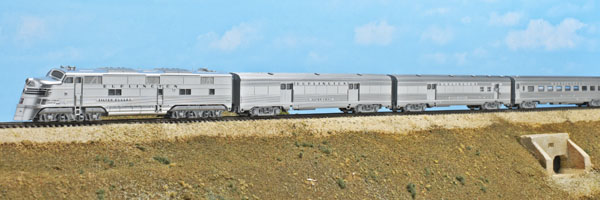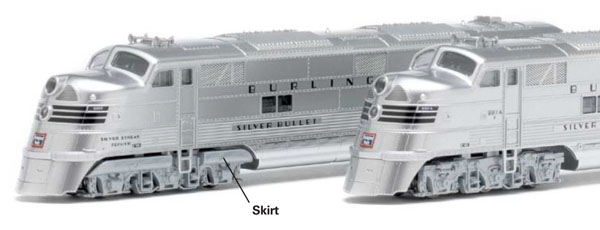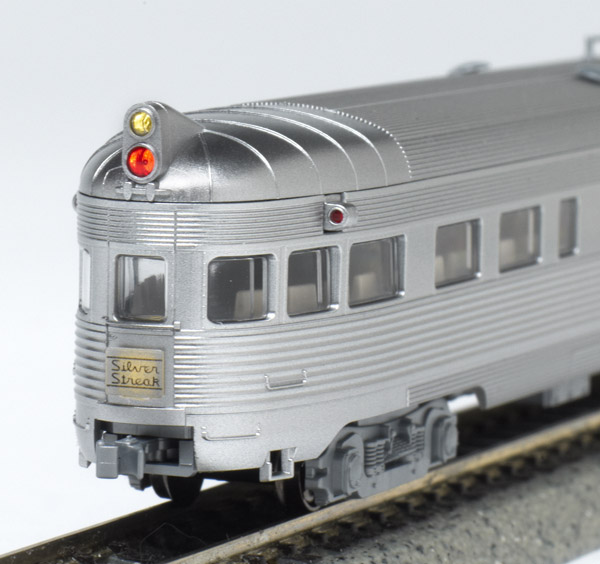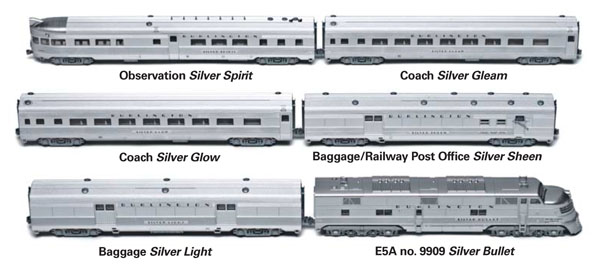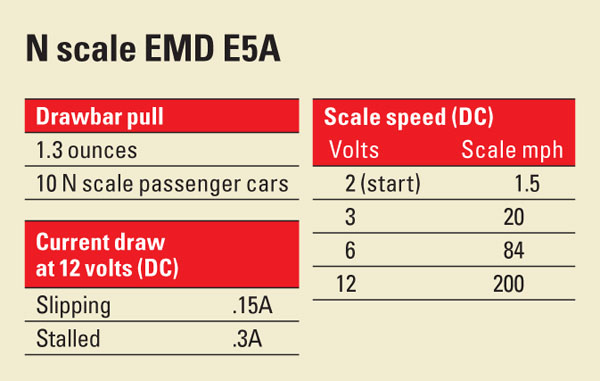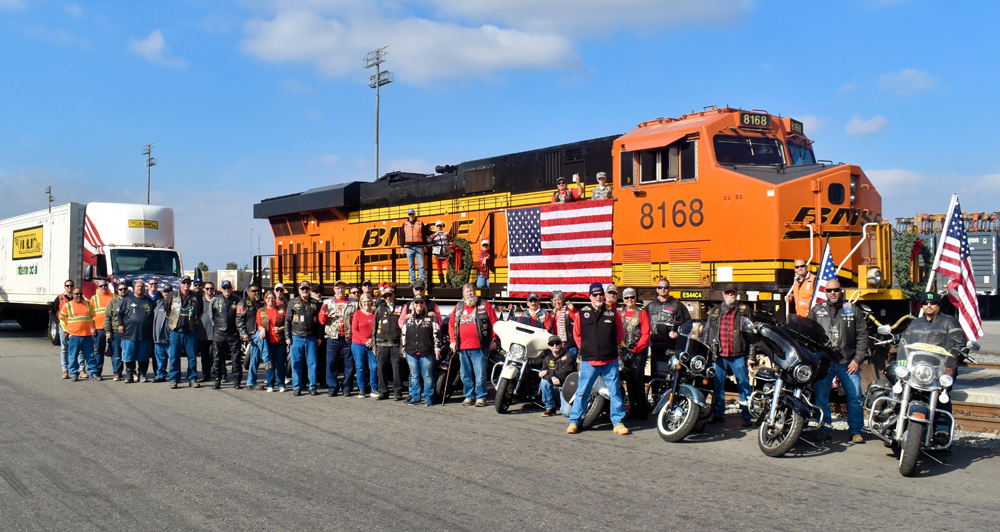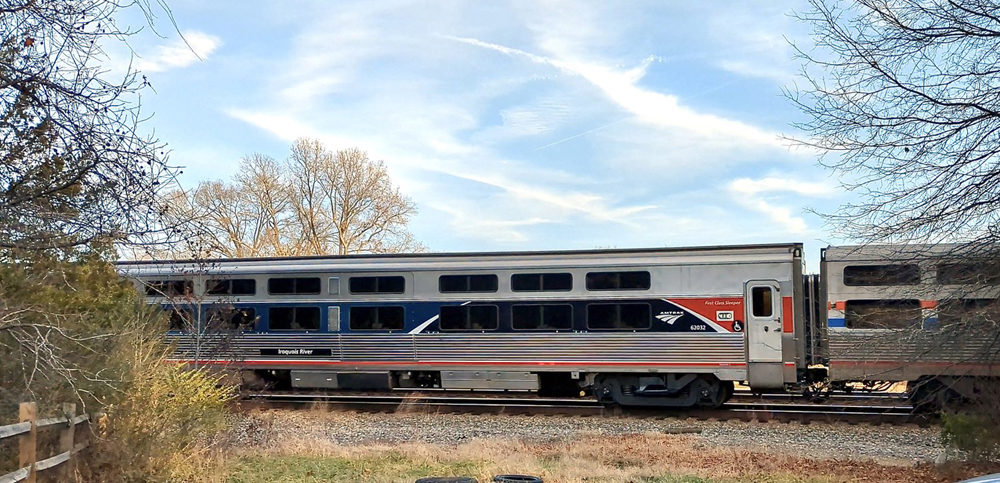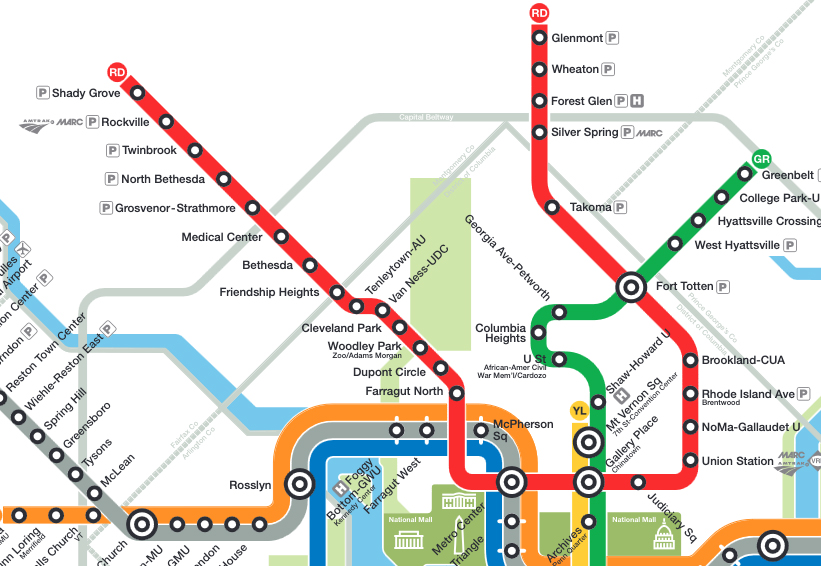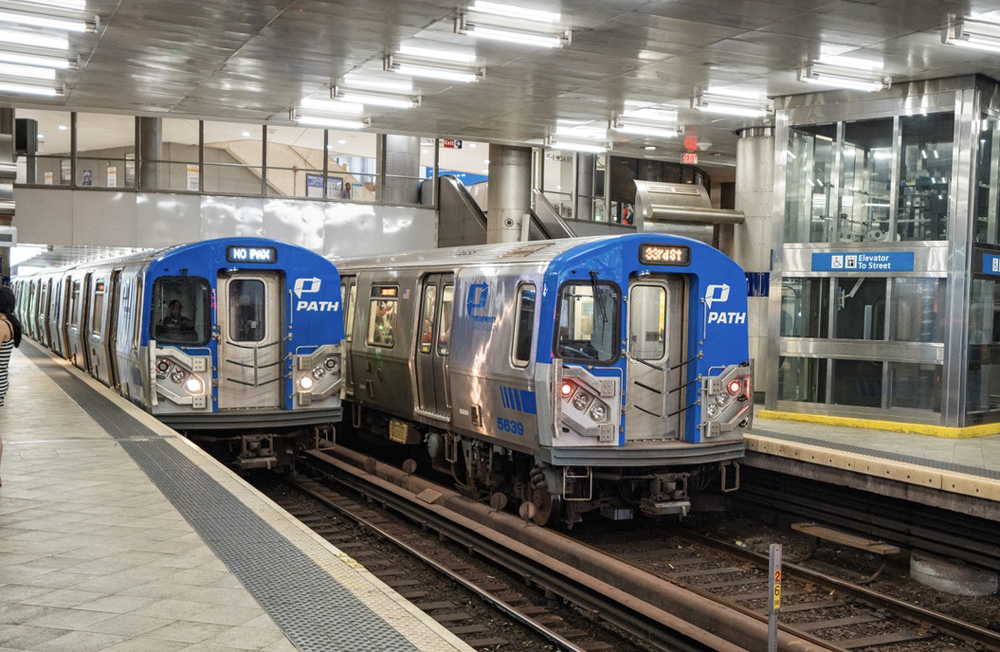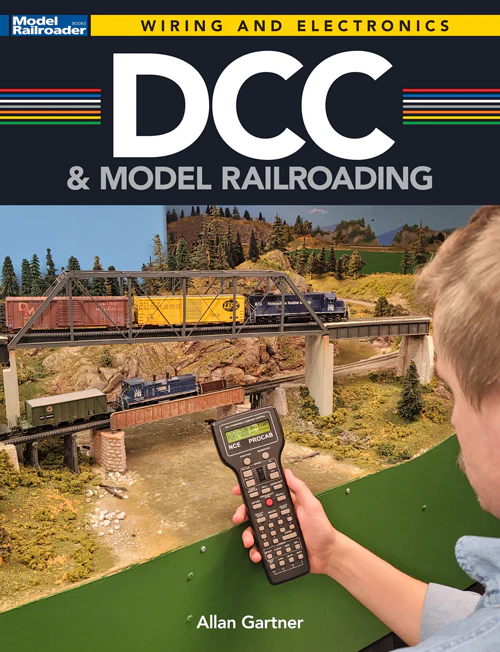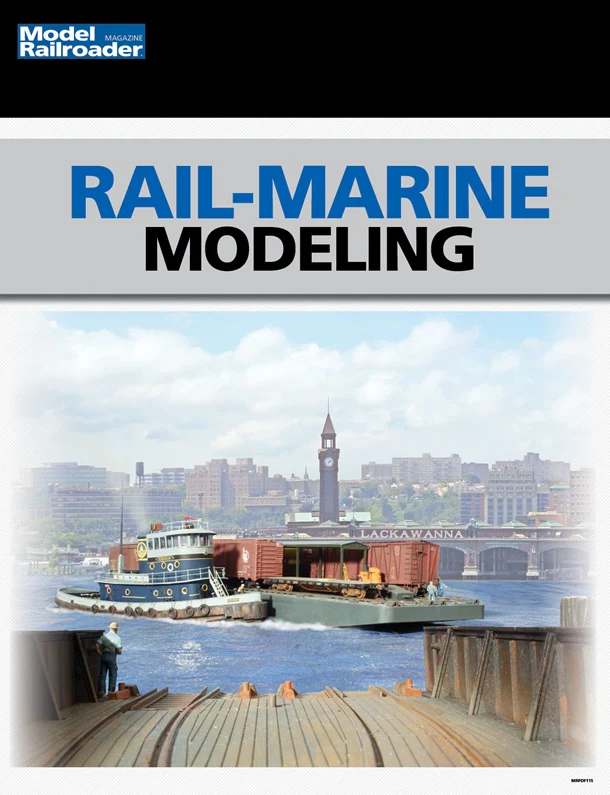The prototype. The inauguration of the Burlington’s Silver Streak Zephyr on April 15, 1940 marked a major change from the shovel-nose look of its predecessors. The new train featured the CB&Q’s first purchase of an Electro- Motive Division E-series passenger locomotive for greater flexibility and to improve crew safety in grade-crossing accidents. Its success led the Burlington to buy 11 of the E5A units and 5 E5Bs, and led to a fleet of more than 100 E units that operated the railroad’s entire passenger service until the advent of Amtrak in 1971.
The Silver Streak Zephyr ran a daily round trip leaving Lincoln, Neb., at 7:30 a.m. with arrival in Kansas City at 12:30 p.m. After a quick cleaning, the return trip left Kansas City at 2:30 p.m. with arrival in Lincoln at 7:40 p.m.
A single E5A handled the 5-car consist assigned to this lightly traveled route. Unlike its predecessors, the Silver Streak Zephyr’s cars weren’t articulated.
The Kato models are well done with superb detailing throughout. All of the signature Burlington items are there, including the rakish slant of the nose and the low side windows. A small packet of parts is included so the pilot can be opened to add an optional front coupler. This allows the units to run in a 2-unit A-A consist on larger trains.
All of these E units are beautifully decorated in a plated finish that does a nice job of simulating stainless steel. The black printed lettering, stripes and grills, 3-color herald on the nose, and the train name below the cab are all sharp and opaque. All three locomotives even have the proper unit numbers displayed in their number boards.
All the cars’ external dimensions and interior arrangements match prototype diagrams in The Passenger Car Library, Vol. 1 – CB&Q, by W. David Randall.
Each car rides on a pair of Kato’s Budd 4-wheel roller-bearing passenger trucks. These trucks have rigid acetal plastic frames. The wheelsets consist of a tubular axle with needle-point stub axles pressed into both ends. This allows the free-rolling trucks to pick up current from both rails.
The model’s mechanism was smooth and quiet throughout its speed range. Although the prototype could reach speeds above 100 mph, it didn’t run nearly as fast as the model’s 200 scale mph top speed. At 6 volts, the Kato E5 cruised along at 84 scale mph, which is more than fast enough for most layouts.
I ran the train around the 12″ curves of our N scale layout without difficulty. The lights in the locomotive and observation car didn’t flicker when the train negotiated the layout’s no. 6 turnouts.
Board-replacement DCC decoders are available from Digitrax (part no. DN163K0E) and Train Control Systems (part no. K0D8-E). With its attention to prototype details, Kato has done a fine job bringing the Burlington’s Silver Streak to N scale.
Manufacturer
Kato USA Inc.
100 Remington Rd.
Schaumburg, IL 60173
www.katousa.com
Era: 1940 to 1959
Locomotive features
- All-wheel drive and electrical pickup
- Blackened metal wheels in gauge
- Body-mounted magnetic knuckle coupler on rear at correct height (with modeler-installed trip pins)
- Five-pole skew-wound motor with dual brass flywheels
- Light-emitting diode headlights
- User-installed front coupler at correct height
- Weight: 5 ounces
Car features
- Blackened metal wheels in gauge
- Observation car has illuminated LED tailsign, backup, and marker lights
- Truck-mounted magnetic knuckle couplers at correct height (with modeler-installed trip pins)
- Weight: 1 ounce each, (½ ounce under the National Model Railroad Association recommendation RP-20.1)





